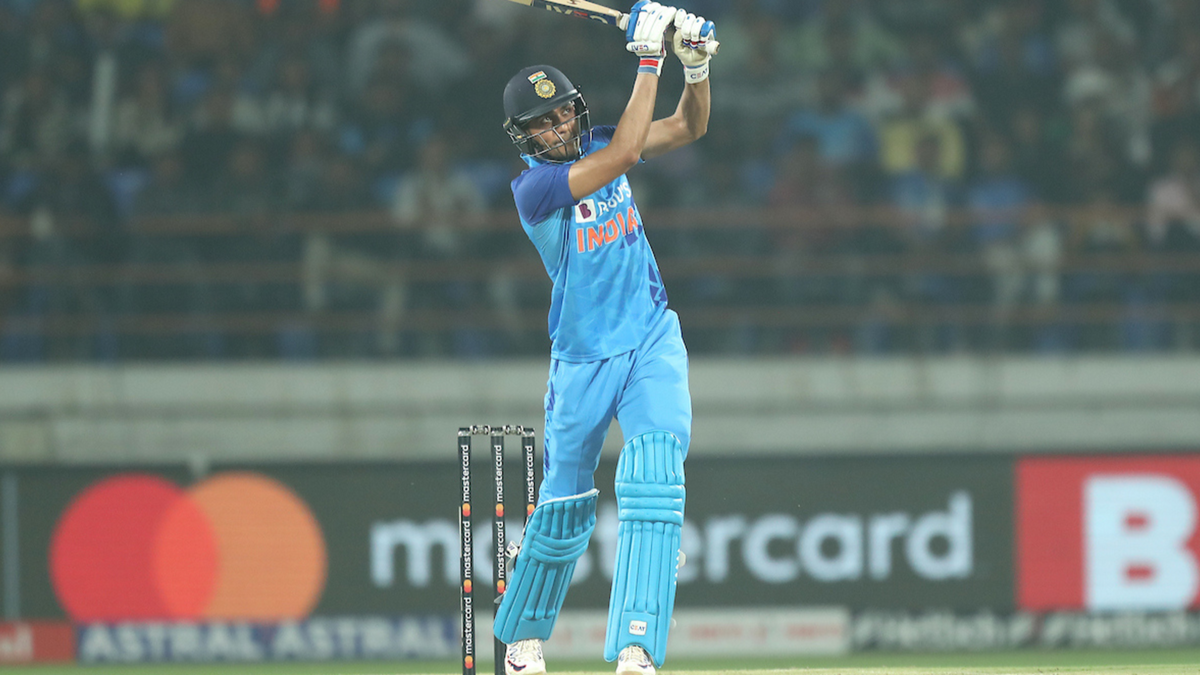
India clinched the first T20I series of the year, winning 2-1 against Sri Lanka. Here are the takeaways from the series.
Is Shubman Gill a certainty in the T20I XI?
Gill made 58 runs at a strike rate of 132 in his debut series. One of the most skilled Indian players in ODIs, the youngster averages 57.25 in the format, but has not been unable to crack the T20 code thus far.
In 98 20-over games, Gill strikes at just under 129, often struggling to get going in the powerplay overs. The number drops to 120 in the first six overs, and he struggles to play catch-up for the rest of his innings. In the third T20I on Saturday, Gill was batting on 14 in 17 balls until the end of the powerplay. The next 19 balls fetched him 32, which was not enough.
While batting with Rahul Tripathi (35 in 16), Gill struggled to unleash himself, batting cautiously for most of his innings. He did hit three mesmerising sixes, but his knock did not help India find an answer to their opening woes. His batting approach was similar to the openers India have tried to move on after the T20 World Cup.
India ended with 228-5, with Suryakumar Yadav blazing his way to his third T20I ton. Had he been dismissed early and Tripathi not changed the momentum India’s way, could Gill have attacked, upped his strike rate and taken India to the score they ended up reaching? If the answer is no, India need to shortlist other candidates for the spot.
Rahul Tripathi is here to stay
Just like Surya, Tripathi earned his India cap after turning 30 despite impressive performances in the IPL. A fine player of both spin and pace, Tripathi is a versatile batter who can be used anywhere in the order. Since 2020, he has a strike rate of 132 in the powerplay overs in the IPL, but has carried on to hit at almost 146 in the middle overs.
Tripathi’s strike rate in the death overs (189) makes him a rare batter who can make up for a relatively slow start. He has even batted at No.7 for the Kolkata Knight Riders in the past, and offers solutions to a team that consists of too many top-order players batting out of position.
Tripathi debuted in the second match after an injury to Sanju Samson. He got out to an excellent ball early in his first match, but made up for it in his second with a quick 35. With Gill struggling with his timing at the other end, he took it upon himself to maximise the powerplay overs. Captain Hardik Pandya later admitted that Tripathi’s innings changed the momentum of the game. His refreshing approach and the tempting prospect of seeing him and Yadav bat together should ensure he is given a longer rope.
Hardik Pandya impresses as captain
Unconfirmed reports – a regular feature in contemporary Indian cricket – have already declared Pandya as the next T20I captain, and he gave a strong statement in this series. After losing the toss and asked to bat in the first T20I in Wankhede – a venue that often favours chasing sides – Pandya said that he would have batted first as he wanted to challenge his players by throwing them in uneasy situations. He opted to bowl first in the next game, in Pune, after winning the toss on a wicket that traditionally aids the team batting first.
His excellent use of Umran Malik was remarkable as well. Aware of the need of a tearaway fast bowler to be in his comfort zone to be at their best, Pandya did not give him the new ball but took on the responsibility himself. Malik’s high pace makes him a gamble in the powerplay overs. Bowling in the middle overs, as he often does for Sunrisers Hyderabad, Malik turned out to be effective, even devastating at times.
Axar Patel emerges as a reliable finisher
Injured Ravindra Jadeja has not been able to be a consistent match-winner with the bat for India in T20Is, striking at only 124.52. However, his all-round skills meant that he kept making the XI at No.7 with no other reliable left-handed candidates in the fray. The emergence of Axar Patel is a welcome change. Not only is he a reliable bowler, but his batting growth augurs well for the side.
In this series, he ended with 31* (SR: 155), 65 (209.67) and 21* (233.33), with his knock in the second game standing out in particular. After India had been reduced to 57-5 chasing 207, Patel combined with Yadav to bring his team close. His 65 was the highest score by any India batter batting at No.7 or below. His T20I strike rate is currently 152.38, and his improvement in the department is visible since the 2022 IPL, where he had averaged 45.50 and struck at 151.67.
If Axar the batter can help India finish off games with consistency, it would not be long before he edges ahead of Jadeja in the side after the latter returns.








